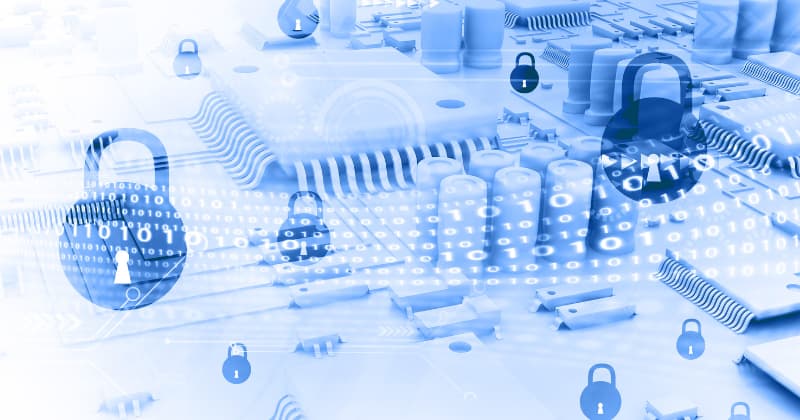Prioritizing Web Security Investments with Threat Exposure Management Strategy Can Reduce Data Breaches by Two-Thirds

CTEM-based security investments = 2/3 fewer breaches by 2026
In an April 2023 press release, Gartner announced that Threat Exposure Management is one of the hottest cybersecurity trends for 2023. The report predicts that by 2026, 60% of enterprises will have adopted CTEM (Continuous Threat Exposure Management) as their primary approach to managing security risks. This indicates a growing recognition of the need for a proactive approach to website security that can adapt to today’s constantly evolving threat landscape. Data breaches and cyber attacks like Magecart are becoming more sophisticated and frequent, so organizations must take proactive measures to protect their websites and their customers’ data.
CTEM is a program that enables organizations to manage their increasing threat exposure while also considering business priorities. Its iterations allow enterprises to continuously monitor, prioritize, validate, remediate and optimize their security exposure. CTEM takes a proactive approach to security and enables organizations to stay ahead of emerging threats by monitoring their security posture and prioritizing their investments based on their risk exposure.
The benefits of implementing a CTEM program include:
- Improved risk management: CTEM enables organizations to continuously monitor their security posture and prioritize their investments based on their risk exposure. This approach allows them to allocate their resources more effectively and reduce their overall risk profile.
- Enhanced business alignment: CTEM enables organizations to prioritize their security investments based on their business priorities. This approach ensures that such investments align with business goals and effectively mitigate the risks that they face.
- Increased situational awareness: CTEM gives organizations real-time visibility into their security posture, enabling them to detect and respond to emerging threats quickly.
- Proactive security approach: CTEM takes a proactive approach to security and enables organizations to stay ahead of emerging threats. This approach ensures that they are better prepared to handle security incidents when they occur.
The Human Factor
Interestingly, the press release also highlights two other trends that dovetail with CTEM. The first of these is the need to adopt a human-centric approach to attracting and retaining security talent. Gartner estimates that 50% of CISOs in large organizations will do so by 2027, and points to the need to reduce what it terms ‘cybersecurity-induced friction’, for employees. It clarifies this in a linked article as being the particularly intense stress burden that comes with helping to maintain cybersecurity in the face of unrelenting threats that result in you either being hacked or not. In simple terms, Gartner sees a growing need for organizations to ensure that while security controls should always maintain the pinnacle of protection, they should be no more burdensome to staff than they need to be.
According to Gartner’s research, a concerning 74% of employees stated that they, “…would be willing to bypass cybersecurity guidance if it helped them or their team achieve a business objective.” A company’s security relies as much on its imperfect human workforce as it does on its automated systems, so minimizing the cognitive and emotional strains on them that can lead to cutting corners, making mistakes, and ultimately burning out has to be a worthwhile investment. If current and future employees know that they are supported, they are more likely to join, remain, and excel.
The second trend occupies the same territory—human-centric talent management, which implies focusing on the needs of staff. Gartner noted that organizations adopting this approach experienced improved functional and technical maturity, and it predicts that by 2026, 60% of organizations will fulfill their recruitment requirements by hiring internally rather than looking elsewhere.
Staff vigilance in response to CTEM threats (and to actual threats) is a crucial plank in the organization’s security posture, so this human-centric approach to hiring and retaining employees becomes all the more significant.
Third-Party Risks
A CTEM approach has become more necessary due to the increased reliance on external vendors’ products. Data privacy platform Osano reported that the average organization shares data with around 730 third-party vendors and the CyberRisk Alliance Report revealed that half of all breaches over the past two years have stemmed from third parties with data access privileges. Since only 23% of organizations have complete visibility of their entire third-party ecosystem, and only 41% understand the behaviors of their most critical vendors, this almost seems inevitable. It perfectly illustrates the need for web CTEM.
In conclusion, data breaches are a major concern for businesses, and the costs they can inflict as a result of regulatory fines, legal action, and reputation loss can be significant, so implementing a web CTEM program has become a necessity. Reflectiz contributes by providing key aspects of this approach, including automatically mapping your online ecosystem, helping to identify your assets, and compiling an inventory of all third- and fourth-party vendors. It identifies risks and vulnerabilities in their software, validates their behaviors, provides continuous monitoring, helps you prioritize and mitigate risks and respond to incidents.
Subscribe to our newsletter
Stay updated with the latest news, articles, and insights from Reflectiz.
Related Articles
Your Website looks great!
But what’s happening behind the scenes?
Discover your website blind spots and vulnerabilities before it’s too late!







